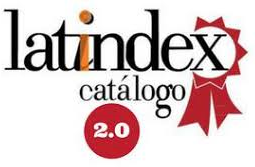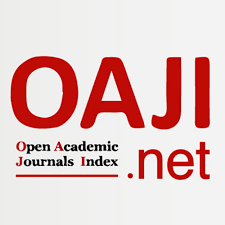Resonances of the world wars of the 20th century in the Colombian communications system: obstructions and transformations
Abstract
The purpose of this work is focused on examining the impact of the First and Second World War on the Colombian communications system, specifically on the postal, telegraph and radio broadcasting services. Regarding the postal system, the main affectation was the interruption or collapse of the routes and the damming of the postal pieces, while in the field of telegraphy and radiotelegraphy the most frequent problem was the paralysis of the expansion plans in terms of infrastructure, in addition to the technological lag, the restrictions on messages and the censorship applied according to the positions assumed by the national government. The broadcasting service demonstrated its scope like never before and was consolidated as a mechanism for propagating the interests of the allies’ cause, although it was also subject to strict censorship and restrictions on free expression. The political and ideological confrontation that arose during both external wars and the position assumed by the country regarding them exerted a notable influence on the debate on internal politics and public security policy.Downloads
References
Abadía Méndez, M. (1915). Informe del Ministro de Gobierno al Congreso de 1915. Imprenta Nacional.
Abadía Méndez, M. (1917). Memoria del Ministro de Gobierno al Congreso de 1917. Imprenta Nacional.
Arango, M. (1919). Informe que el Ministro de Gobierno rinde al Congreso de 1919. Imprenta Nacional.
Arciniegas, G. (1989). Eduardo Santos en A. Tirado Mejía (dir.), Nueva Historia de Colombia, Nueva Historia de Colombia (Tomo I. Historia Política 1886-1946, pp. 3654-373). Editorial Planeta.
Ayala Diago, C. A. (2014). En las vísperas de la Primera Guerra Mundial: la recomposición de los Imperios. Credencial Historia, (294), 1-8.
Bejarano Ávila, J. A. (1989). La economía entre 1930 y 1945 en A. Tirado Mejía (dir.), Nueva Historia de Colombia (Tomo V, pp. 115-148). Editorial Planeta.
Bosemberg, L. E. (2006). Alemania y Colombia, 1933-1939. Iberoamericana. 6(21), 25-44
Botero, M. (2006). Guerra en clave morse. Revista Folios, (9), 6-12.
Bruton, E. (2017). The Cable Wars: Military and State Surveillance of the British Telegraph Cable Network during World War One, en A. Marklund y M. Rüdiger (Eds.), Historicizing Infrastructure. Aalborg University Press.
Buenahora, L. (1942). Memoria a las Honorables Cámaras, 1942. Imprenta Nacional.
Carreño, P. M. (1913). Informe del Ministro de Gobierno al Congreso de 1912. Imprenta Nacional.
Cortés Guerrero, J. D. (2014). Neutralidad en medio de la guerra. Credencial Historia, (299), 11-15.
Dávila Tello, J. V. (1947). Memoria de 1947. Imprenta Nacional.
Dehne, P. (2014). How important was Latin America to the First World War? Iberoamericana, 14(53), 151-164.
Desbordes Vela, R. (2018). Havas-Lima o la inclusión del Peru en la red internacional de información del siglo XIX. Desde el Sur, 10(2), 411-448.
Díaz S., A. (1943). Memorias a las Honorables Cámaras. Imprenta Nacional.
Echeverri, L. G. (1945). Memoria de 1945. Imprenta Nacional.
Friedewald, M. (2012). Telefunken vs. Marconi, or the Race for Wireless Telegraphy at Sea, 1896-1914. SSRN. https://doi.org/j93w
García Cadena, L. (1946). Memoria de 1946. Imprenta Nacional.
García Pérez, J. (2008). El fenómeno de la guerra en el siglo XX. Una aproximación a la dinámica, geografía, modos operatorios y naturaleza de los conflictos armados. Norba. Revista de Historia, (21), 89-115.
Gómez Picón, A. (1944). Memoria a las Honorables Cámaras, 1944. Imprenta Nacional.
Guerrero Barón, J. (2014). El proceso de las derechas en Colombia y los imaginarios de las guerras internacionales, 1930-1945. Universidad Pedagógica y Tecnológica de Colombia.
Informe del Administrador General de Correos al Señor Ministro de Gobierno 1914 a 1915. (1915). Imprenta Nacional.
León Vargas, K. (2010). El correo despega en El correo en Colombia, 1900-2013. La transformación. Del avión al código postal (pp. 10-13). Semana.
Mesa Valencia, A. F. (2015). El papel de Colombia en la Segunda Guerra Mundial. Desde el inicio de la conflagración hasta el ataque de Pearl Harbor. Historia Caribe, 10(26), 291-319. https://doi.org/j93z
Molina, P. A. (1918). Informe del Ministro de Relaciones Exteriores al Congreso de 1918. Imprenta Nacional.
Morales Berti, L. (1919). Informe que el Administrador General de Telégrafos rinde al Señor Ministro de Gobierno, relativo al año administrativo de 1918 a 1919. Imprenta Nacional.
Morales de Gómez, T. (2015). La neutralidad colombiana durante la Primera Guerra Mundial. Credencial Historia, (305), 208-211.
Morales Moreno, H. (2009). América Latina en la Segunda Guerra Mundial (La historiografía del populismo en la región). Revista de Historia de América, (140), 33-49.
Moreno, D. y Castillo Muñoz, J. (1995). Del maguaré a la fibra óptica: crónica de las comunicaciones. Dirección de Comunicaciones.
Múnera G., L. F. (1992). La radio y la televisión en Colombia: 63 años de historia. Apra Ediciones.
Pardo García, A. (2020). 100 años de radio en Colombia. 280 hitos. Ediciones Aurora.
Pareja, R. (1984). Historia de las Radio en Colombia, 1929-1980. Servicio Colombiano de Comunicación Social.
Pinzón Rueda, C. N. y Montaña Barrera, Y. P. (2016). Ecos de la Primera Guerra Mundial en el periódico El Tiempo [Tesis de Maestría]. Universitá degli Studi di Salerno y Universidad Católica de Colombia.
Pita Pico, R. (2018). Violencia, censura y medios de comunicación en Colombia: los efectos del Bogotazo y el colapso en las transmisiones radiales. Anagramas. Rumbos y Sentidos de la Comunicación, 17(33), 153-173.
Pita Pico, R. (2022). Las guerras civiles decimonónicas en Colombia y sus consecuencias en la conexión telegráfica. Revista Ciencias y Humanidades, 15(15), 87-116.
Rausch, J. M. (2014). Colombia’s Neutrality during 1914-1918: An Overlooked Dimension of World War I. Iberoamericana, 14(53), 103-115.
República de Colombia. (1941). Diario Oficial. Imprenta Nacional.
Rinke, S. (2019). América Latina y la Primera Guerra Mundial. Una historia global. Fondo de Cultura Económica.
Rinke, S. (2021). Traición a la civilización: perspectivas latinoamericanas sobre la Primera Guerra Mundial en R. González Arana y J. L. Montes (comps.), La Gran Guerra de 1914-1918. De Europa a América. Proyecciones y representaciones del conflicto mundial (pp. 51-83). Ediciones Uninorte.
Rivas, R. (1961). Historia Diplomática de Colombia 1810-1934. Imprenta Nacional.
Roballo Lozano, J. (2012). Relaciones del Estado colombiano con Alemania: doscientos años de amistad y cooperación en J. E. Constaín (ed.), 200 años de la presencia alemana en Colombia (pp. 5-24). Universidad del Rosario.
Schulze Schneider, I. (1995). Alemania y América. La llamada del Nuevo Mundo: 500 años de presencia alemana en América. Editorial Mapfre.
Schulze Schneider, I. (2013). Los medios de comunicación en la Gran Guerra: “Todo por la Patria”. Historia y Comunicación Social, (18), 15-30. https://doi.org/j9cd
Suárez, M. F. (1915). Informe del Ministro de Relaciones Exteriores al Congreso de 1915. Casa Editorial de Arboleda & Valencia.
Suárez, M. F. (1916). Informe del Ministro de Relaciones Exteriores al Congreso de 1916. Casa Editorial de Arboleda & Valencia.
Suárez, M. F. (1917). Informe del Ministro de Relaciones Exteriores al Congreso de 1917. Casa Editorial de Arboleda & Valencia.
Tovar Zambrano, B. (1989). La economía colombiana (1886-1922) en A. Tirado Mejía (dir.), Nueva Historia de Colombia (Tomo V, pp. 9-50). Editorial Planeta.
Uricoechea Herrera, L. (1917). Estudio sobre la neutralidad. Arboleda & Valencia.
Winseck, D. R., y Pike, R. M. (2007). Communication and Empire: Media, Markets, and Globalization, 1860–1930. Duke University Press.
Copyright (c) 2023 Roger Pita Pico

This work is licensed under a Creative Commons Attribution-NonCommercial 4.0 International License.

Historia & Guerra uses an international license Attribution-NonCommercial 4.0 International (CC BY-NC 4.0).
You are free to:
- Share — copy and redistribute the material in any medium or format.
- Adapt — remix, transform, and build upon the material.
- The licensor cannot revoke these freedoms as long as you follow the license terms..
Under the following terms:
Attribution — You must give appropriate credit, provide a link to the license, and indicate if changes were made. You may do so in any reasonable manner, but not in any way that suggests the licensor endorses you or your use.
NonCommercial — You may not use the material for commercial purposes.
No additional restrictions — You may not apply legal terms or technological measures that legally restrict others from doing anything the license permits.
Notices:
You do not have to comply with the license for elements of the material in the public domain or where your use is permitted by an applicable exception or limitation.
No warranties are given. The license may not give you all of the permissions necessary for your intended use. For example, other rights such as publicity, privacy, or moral rights may limit how you use the material.
The author retains all rights to his work without restriction and grants Historia & Guerra the right to be the first publication of the work. Likewise, the author may establish additional agreements for the non-exclusive distribution of the version of the work published in the Journal (for example, placing it in an institutional repository or publishing it in a book), with the acknowledgment of having been first published in this journal. Use of the work for commercial purposes is not permitted.
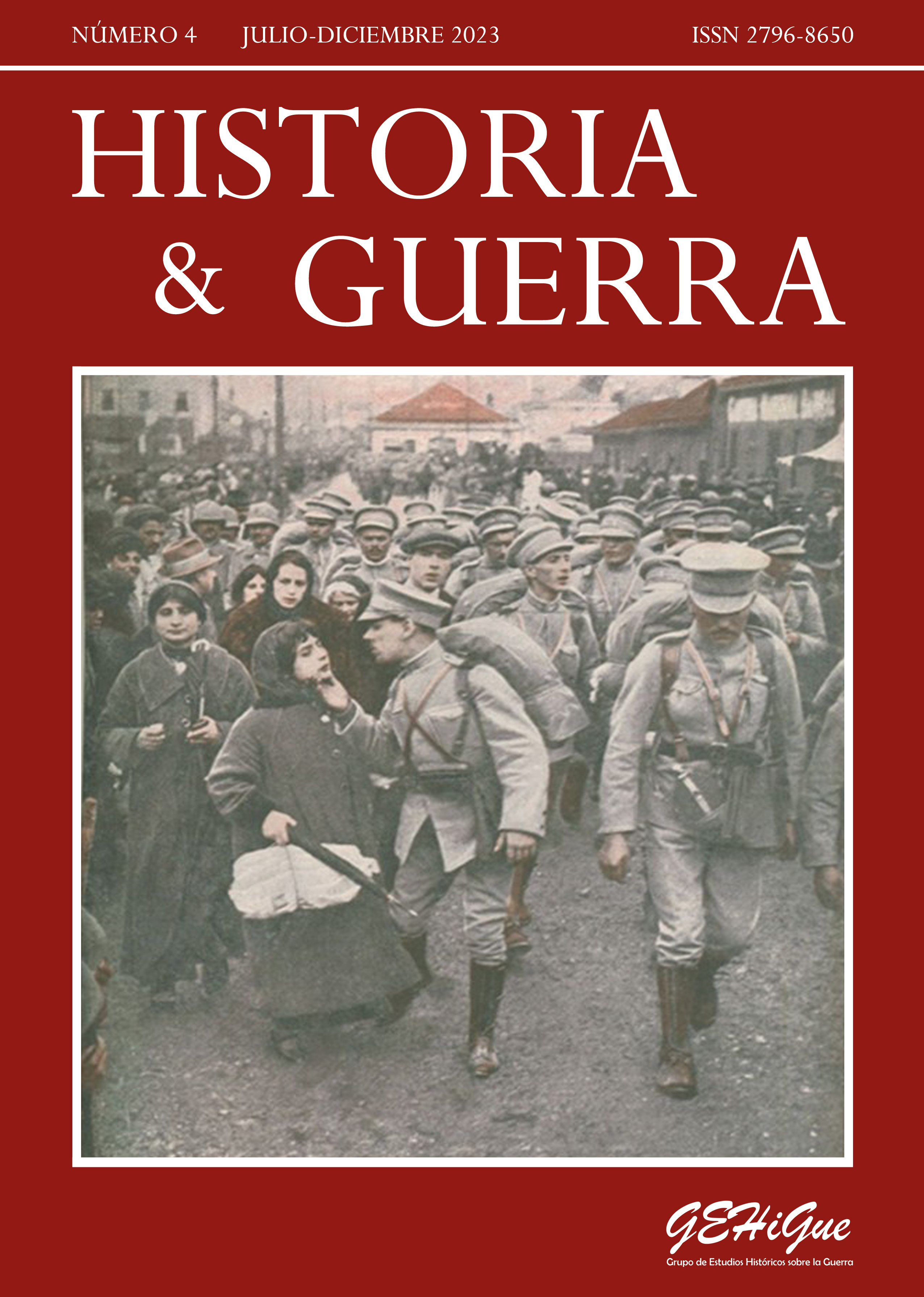

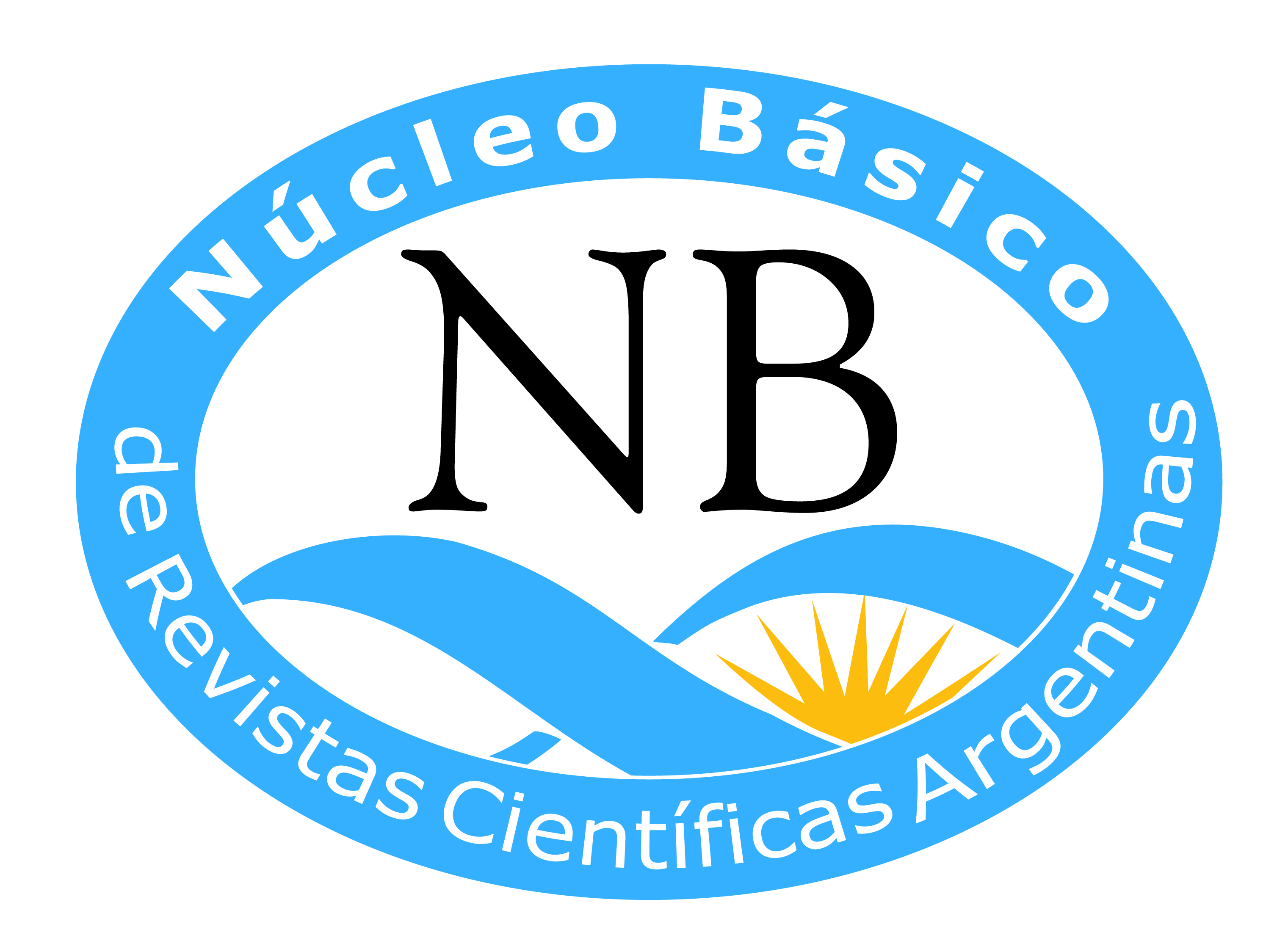




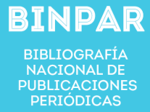






.jpg)


